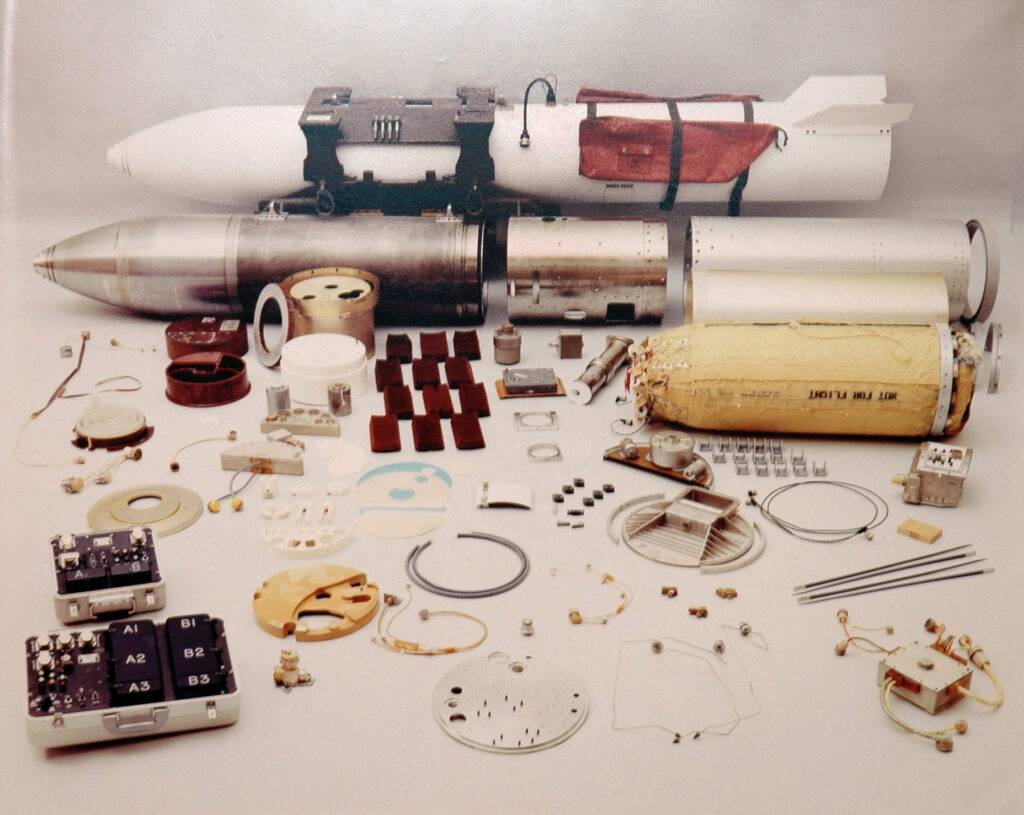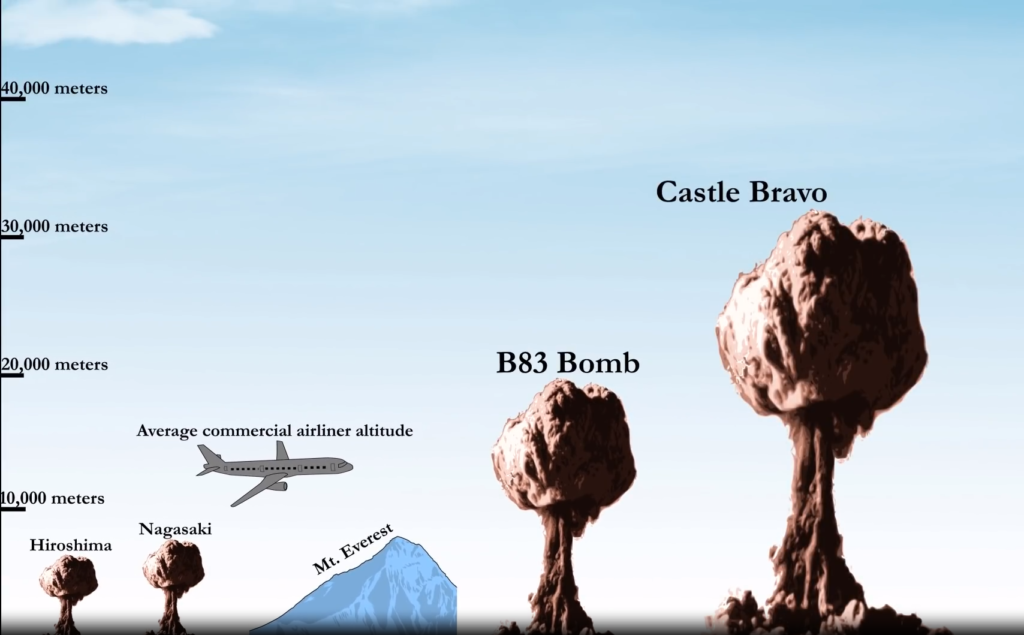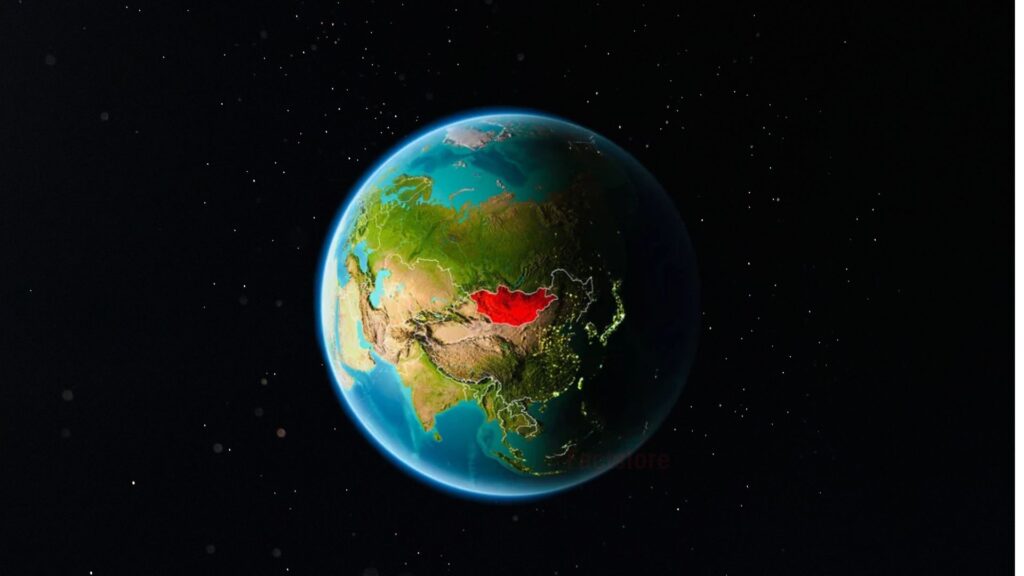Ever since the first nuclear weapons test in the deserts of New Mexico and the devastating bombings of Hiroshima and Nagasaki, the power of nuclear weapons has increased exponentially. With over 2,475 detonations worldwide, predominantly by the United States and the former Soviet Union, these weapons have evolved into immensely destructive forces.
However, it is crucial to recognize that only two nuclear bombs have been used in warfare—the ones dropped on Hiroshima and Nagasaki during World War II by the United States. Despite their immense impact at the time, these bombs pale in comparison to the destructive potential of modern nuclear weaponry. Let’s explore just how much more powerful nuclear weapons can become.
The Scale of Nuclear Destruction

In the United States arsenal, the largest nuclear weapon is the B83, capable of producing a blast of 1.2 megatons. To comprehend this scale, one megaton is equivalent to one million tons of TNT, or 1,000 kilotons. Comparatively, the Hiroshima bomb yielded a blast of merely 15 kilotons, meaning the B83’s explosion is over 80 times more powerful. It is important to note that the size mentioned here only refers to the mushroom cloud created by the detonation. To provide a better perspective, let’s visualize the size of Mount Everest alongside the average altitude of a commercial airliner.

The Castle Bravo bomb stands as the largest nuclear weapon ever tested by the United States, generating a colossal 15 megatons blast, roughly 1,000 times more powerful than Hiroshima. Nevertheless, it pales in comparison to the most formidable nuclear weapon ever detonated. In October 1961, the Soviet Union executed the Tsar Bomba over Novaya Zemlya, achieving an unimaginable force of 50 megatons, equivalent to approximately 3,333 Hiroshima blasts. The bomb was so overwhelmingly powerful that it nearly destroyed the aircraft that dropped it, shattered windows as far as Norway and Finland, and sent shockwaves reverberating around the globe three times over.
Surprisingly, this test represented a scaled-down version of what was theoretically possible. Although never actualized, the Soviets had plans for a bomb twice as potent as the Tsar Bomba—an awe-inspiring 100 megaton blast, equivalent to an incomprehensible 6,666 Hiroshima blasts combined.
The Global Nuclear Arsenal: An Alarming Reality
The number of nuclear weapons in existence today is staggering. Current estimates suggest a total of approximately 15,600 nuclear warheads, a horrifying amount capable of obliterating the world multiple times over. However, it is crucial to note that the control over this stockpile lies predominantly in the hands of nine nations. Alarmingly, the United States and Russia account for a significant 92 percent of these weapons, leaving the remaining eight percent to be distributed among France, China, the United Kingdom, Pakistan, India, Israel, and North Korea.
Among these nations, Israel maintains an air of secrecy around its nuclear program. While the existence of their nuclear weapons is widely acknowledged, Israel has neither confirmed nor denied this fact publicly. The veil of secrecy remains intact, with little official information available. The only notable exception is Mordechai Vanunu, a man who dared to expose details about Israel’s nuclear program and endured a lengthy 18-year imprisonment, with over 11 years spent in solitary confinement.
The Unique Case of South Africa
In the past, South Africa held six nuclear weapons. The apartheid regime ruling at that time feared the 79 percent of the population that had the potential to vote for communist ideologies, posing a threat to their government. However, in a remarkable turn of events, South Africa voluntarily dismantled its entire nuclear arsenal. This act makes South Africa the only nation to have possessed nuclear weapons and willingly relinquished them. Although Ukraine, Belarus, and Kazakhstan also had nuclear weapons temporarily after declaring independence from the Soviet Union in 1991, South Africa’s case remains exceptional.
Also Read: Afghanistan Unveiled – The USSR, USA and Critics
Ukraine’s Complex Nuclear Dilemma
The situation with Ukraine is particularly intriguing. After gaining independence, Ukraine found itself in possession of over 5,000 nuclear weapons, briefly becoming the world’s third-largest nuclear power. This newfound status bestowed immense power upon Ukraine, elevating it as one of the most influential countries on Earth. However, realizing the potential risks and uncertainties associated with such power, Ukraine agreed to transfer its nuclear arsenal to Russia. In exchange, they received a solemn promise that their territorial integrity and borders would be respected. Regrettably, subsequent events have shown that this promise was not honored, leading to further complications.
The Future of Nuclear Disarmament
Considering the experiences of South Africa and Ukraine, it becomes increasingly doubtful that other countries will willingly part with their nuclear weapons. The apprehension arising from these situations underscores the challenges associated with disarmament efforts. The power and influence that come with possessing nuclear weapons often outweigh the incentives for relinquishing them.
In conclusion, the world stands witness to the immense destructive power of nuclear weapons. With an alarming number of warheads in existence, concentrated primarily in the hands of a few nations, the global dynamics of power and security are deeply influenced. The enigma surrounding Israel’s nuclear program, the unique case of South Africa’s voluntary disarmament, and Ukraine’s complex struggle underscore the complexities of this issue. As we ponder the future, it is crucial to navigate the path towards global disarmament with caution, recognizing the delicate balance between security and the preservation of our planet.










